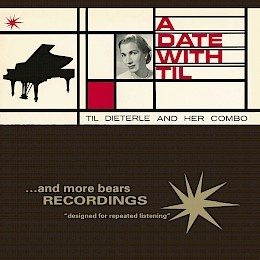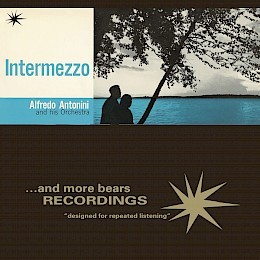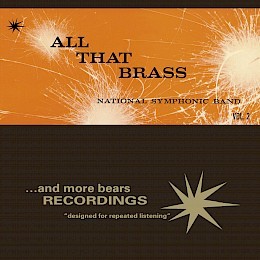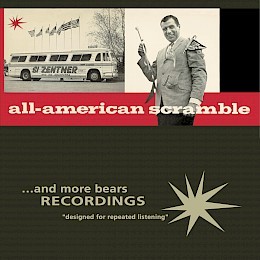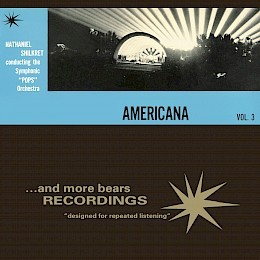

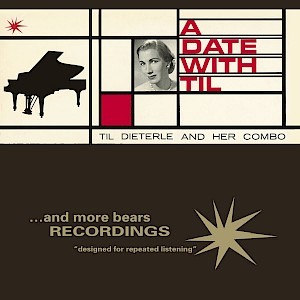


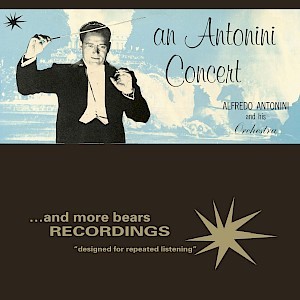



Never on record, never in shops: The music which SESAC published in the 50s and 60s was exclusively sold for airplay to radio stations in the USA. Renowned musicians entered SESAC studios to record, when they were between contracts. Now you have the chance to hear it all. The large variety of music includes Jazz (incl. Sy Oliver, Duke Ellington, Count Basie) Classic, Polka, Folk, Country, Hawaii, Latin, and much more.
The close relationship between record companies, music publishers and radio stations is well understood by most members of the music business today. Indeed, it has remained unchanged for decades. Surprisingly, that relationship hasn’t always been as it is today.
For more than the past half century, record companies and music publishers have provided their product to radio stations for free, hoping to receive airplay. Their motives are well known: radio exposure provides performance revenue for publishers and composers. Such plays are logged by performance rights organizations like ASCAP and BMI (who operate on a non-profit basis but also take a slice of the pie.)
The record companies and the performers also stand to benefit from airplay. They hope that when their records are heard on the radio, listeners will want to purchase them. From that point of view, radio plays offer free advertising for the record manufacturers and artists. If ever there were a mutually beneficial arrangement, this is it. Everybody wins: the singers (who earn royalties on records sold), the songwriters, the song publishers, and the record manufacturers. Also included in this win-win cycle are the radio stations themselves, who get to spin hit records, attract a larger audience and get to sell air time to advertisers at premium rates.
What could be simpler? Believe it or not, back in the formative days of radio broadcasting and record manufacturing, there was an alternative approach to this lucrative arrangement. This is where the story of SESAC begins. Founded in 1930 by Paul Heinecke, SESAC's approach took quite a different path to the business of performance rights. Heinecke’s was one of several dozen companies that provided electrical transcriptions to radio stations for a subscription fee. He reasoned that if SESAC recorded desirable music (often, with 'name' artists who were briefly 'free' or between contracts with major labels), they could provide this music directly to radio stations for airplay. Because these recordings were produced directly by SESAC, there was no attempt to lure record buyers into the equation. In fact, even if a radio listener liked what he heard on one of SESAC’s discs and wanted to purchase it, he’d be unable to. In most cases these recordings existed nowhere but on special transcriptions released directly to radio stations. As we said – it was a totally different model than the one we all know about and take for granted today.
By the early 1950s the direct licensing of electrical transcriptions to radio stations had lost much of its popularity. The era of the disc jockey was dawning and such on-air personalities changed everything by spinning regular commercial recordings, the same ones listeners could buy in their neighborhood record stores. SESAC, which had begun issuing discs to radio stations in 1947, finally ceased that part of their operations in 1966.
The interesting question for record collectors today is: what happened to those transcriptions discs, produced in relatively small numbers and never commercially marketed? Many of them – which contain material not available elsewhere - hold considerable interest to today’s collector.
Highlights of the catalogue include:
• a catalog of more than 7500 songs.
• exclusive recordings from jazz giants such as Count Basie, Duke Ellington, Woody Herman and many others.
• ace session musicians and supporting players who were stars in their own right like Alice Coltrane, Nat Adderly, Thad Jones, Kai Winding, Si Zentner, Gary Burton, Andy Williams, Eric Dolphy, Zoot Sims and many, many more.
• rare and sought after session recordings with Chet Atkins, The Jordanaires, Anita Kerr, Richard Maltby, Tony Mottola, Nathaniel Shilkret, The Stamps Baxter Men, The Statesmen, Webb Pierce and Faron Young.
• extensive classical repertoire with symphony orchestras.
• 1950s material in categories like Swing, Lounge, Country, Folk, Barbershop, Choir, Cowboy Music, Southern Gospel, Hawaiian, Latin, Marching Bands, Polkas among others.
However to fit with the changing trends within the music scene the music will be available on-line as downloads or streaming.
